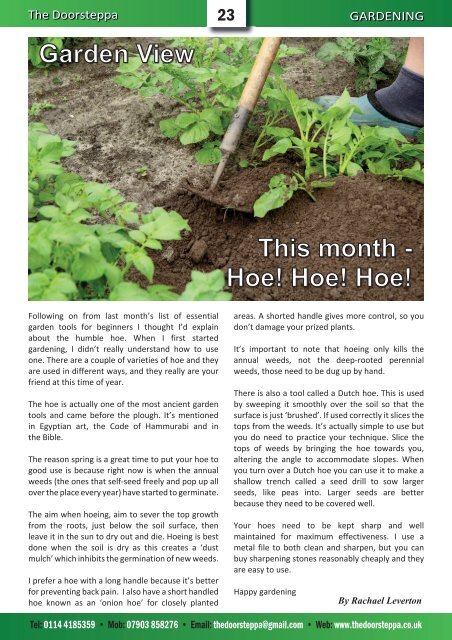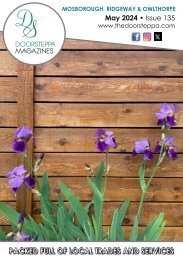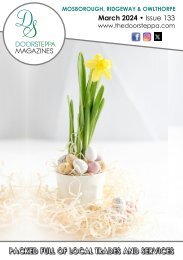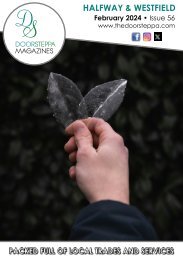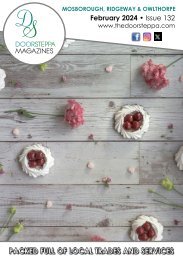Mosborough April 2021
You also want an ePaper? Increase the reach of your titles
YUMPU automatically turns print PDFs into web optimized ePapers that Google loves.
The Doorsteppa<br />
23 GARDENING<br />
Following on from last month’s list of essential<br />
garden tools for beginners I thought I’d explain<br />
about the humble hoe. When I first started<br />
gardening, I didn’t really understand how to use<br />
one. There are a couple of varieties of hoe and they<br />
are used in different ways, and they really are your<br />
friend at this time of year.<br />
The hoe is actually one of the most ancient garden<br />
tools and came before the plough. It’s mentioned<br />
in Egyptian art, the Code of Hammurabi and in<br />
the Bible.<br />
The reason spring is a great time to put your hoe to<br />
good use is because right now is when the annual<br />
weeds (the ones that self-seed freely and pop up all<br />
over the place every year) have started to germinate.<br />
The aim when hoeing, aim to sever the top growth<br />
from the roots, just below the soil surface, then<br />
leave it in the sun to dry out and die. Hoeing is best<br />
done when the soil is dry as this creates a ‘dust<br />
mulch’ which inhibits the germination of new weeds.<br />
I prefer a hoe with a long handle because it’s better<br />
for preventing back pain. I also have a short handled<br />
hoe known as an ‘onion hoe’ for closely planted<br />
areas. A shorted handle gives more control, so you<br />
don’t damage your prized plants.<br />
It’s important to note that hoeing only kills the<br />
annual weeds, not the deep-rooted perennial<br />
weeds, those need to be dug up by hand.<br />
There is also a tool called a Dutch hoe. This is used<br />
by sweeping it smoothly over the soil so that the<br />
surface is just ‘brushed’. If used correctly it slices the<br />
tops from the weeds. It’s actually simple to use but<br />
you do need to practice your technique. Slice the<br />
tops of weeds by bringing the hoe towards you,<br />
altering the angle to accommodate slopes. When<br />
you turn over a Dutch hoe you can use it to make a<br />
shallow trench called a seed drill to sow larger<br />
seeds, like peas into. Larger seeds are better<br />
because they need to be covered well.<br />
Your hoes need to be kept sharp and well<br />
maintained for maximum effectiveness. I use a<br />
metal file to both clean and sharpen, but you can<br />
buy sharpening stones reasonably cheaply and they<br />
are easy to use.<br />
Happy gardening<br />
By Rachael Leverton<br />
Tel: 0114 4185359 • Mob: 07903 858276 • Email: thedoorsteppa@gmail.com • Web: www.thedoorsteppa.co.uk


